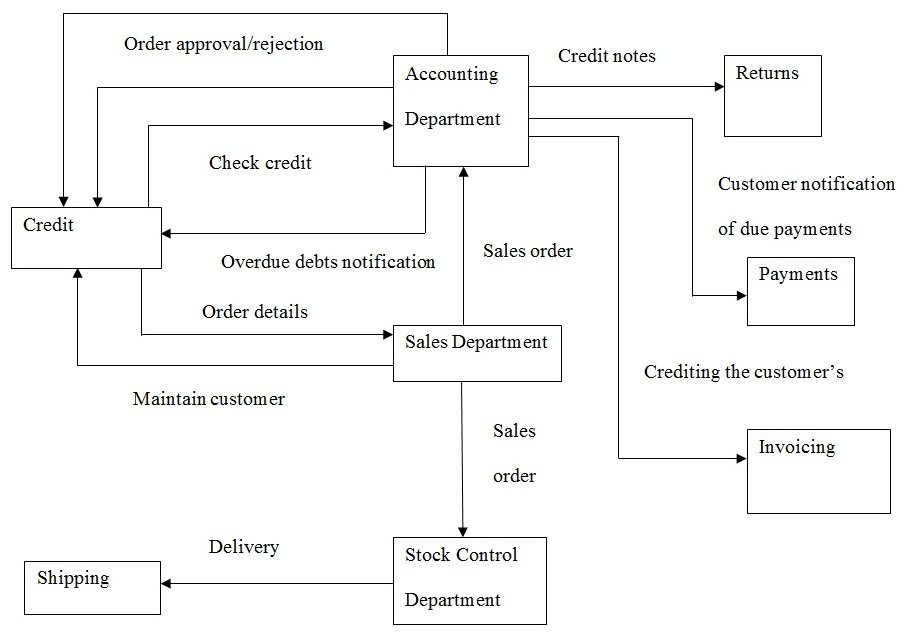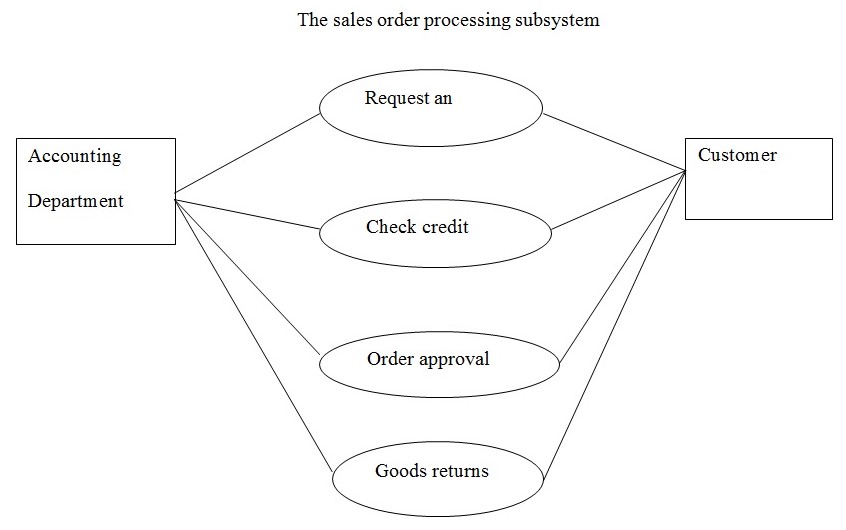System analysis and design is an important aspect of any business context, with the principal objective of keeping up with the expansion in the scale of operations and developing appropriate strategies for meeting the demands of the customers of a given business enterprise. This technical report highlights the key elements that are required during the analysis and design of a business system for the Supreme Building Materials (SBM). An overview of the requirements analysis at the SBM reveals that the business enterprise is in dire need of implementing an up to date business information system in order to cope with the increasing customer demands and the scale of operations. This paper highlights the functional requirements of the SBM business system, and appropriate solutions that can be implemented in order to increase the efficiency in the execution of business processes at the enterprise. The report highlights the background of the project in question, the scope of the new system to be implemented. The Data Flow Diagram will be used to illustrate the scope and boundary of the new system. In addition, the report will also provide a description of the requirements of the system by using an Entity relationship diagram and its respective description of the data types and attributes of each of the various entities and their relationships. A design of one output will be provided with the relevant data. The requirements report will finalize by providing conclusion and recommendations by highlighting the various problems and opportunities and a summary of the expected benefits associated with the implementation of the new system.
Problem definition
The current business information system being used at the SBM is based on a manual platform; the manual approach is not effective enough to cater for the business requirements of SBM, from the internal and external perspectives of the business. An analysis revealed the following constraints associated with the current manual system at SBM:
- Sales and distribution operations are done manually resulting to increased pressure from the customers and a low goodwill from the customers.
- Data entry errors due to the high number of transactions.
- The business enterprise has not upgraded its system to meet the increased business growth that has been witnessed in the course of the last five years.
- The sales department is entirely responsible for maintaining the wide customer’s records, which are kept and updated manually; the business information system therefore lacks the characteristic of a real time system.
- The business is not maximizing on its full potential because of the ineffectiveness associated with the present manual business system.
- The current business system and the manner in which business processes are executed does not foster employee productivity.
- There is lack of customer satisfaction due to lack of employee productivity.
- The state of the business system makes file and record management difficult.
- There is risk of business continuity due to the fact that the business enterprise significantly depends on the efficiency of the business information system.
It is evident from the business requirements analysis and the problem definition that SBM requires a redesign of its information system in order to help in the execution of its core business functions and facilitate profitability.
Statement of the proposed solution
The suggested solution to this impending problem is to computerize the operations of the business enterprise. This requires the redesigning of the business information system that can effectively accommodate all the needs of the business in terms of internal operations and external operations. The following are the system capabilities of the proposed business information system for SBM:
- System scalability, which entails architectural planning so that the proposed information system can respond to the changing business needs currently and in future, to accommodate further business growth.
- Leadership capabilities, which entails the integration of Information System with the core business processes.
- Cost effectiveness, the Information System must be cost effective to the business through enhancing profitability.
- Business Systems Thinking, whereby the solution of the business problems at the enterprise are from an IT perspective and strategic planning.
- Making technology a core requirement and a critical success factor for the business.
- Achieving business efficiency by use of automated business information systems.
- Effective Decision Support Systems to help in the organizational strategic decision making process.
- Automation of business processes.
- And the ability to evaluate the effectiveness of the proposed system with respect to the performance of the business enterprise.
Expected business benefits from the new system
The following are the expected business benefits associated with the implementation of the proposed new system:
- Increased employee productivity due to the ease of the use of the business information system.
- Employee productivity transforms to increased productivity.
- The new system will increase the operational efficiency of the business enterprise.
- The implementation of the proposed system will result to a reduction in the business overhead expenses associated with the manual information system through elimination of paper work.
- The new system will streamline the management processes at the SBM.
- There will be effective manipulation of information, which will result to effective record keeping.
- The proposed system will result to a reduction in the inventory, reduction in personnel and an overall improvement in the productivity of the business enterprise.
- Employee productivity and customer satisfaction results to an improved competitive advantage of the business, which in turn results to increased market share.
- The proposed system will facilitate the strategic planning for the organization, and assist the business to focus on its core business processes and requirements.
- The implementation of the proposed system will also result to increased opportunities for the business, while at the same time, help in the mitigation of threats and realization of the business points of weakness.
- The implementation of the new system will enhance the relationship between the key stakeholders of the business and the business entities through an effective communication framework;
- Increased market share means that the business enterprise will have the capability to invent new products and services to its clients, and help in the realization and development of new markets.
Recommendation
The effectiveness of the current business information system jeopardizes the continuity of the business enterprise. This implies that effective plan of approach is a transformational shift from manual operations to computerization of the business operations of the SBM. Therefore, a complete overhaul of the current system is required in order to facilitate the effective execution of business processes.
Introduction
Background of the project leading to this report
Efficient manipulation of information is the key concept towards ensuring effectiveness in the organization operations and facilitating the organization to match up the present competitive nature of both local and global market. This therefore implies that the paradigm of strategic planning needs to change frequently in order support the new and emerging technologies in information technology and information systems. Strategic Information System planning (SISP) is always directed towards assisting the business enterprise or organization in the realization of its business goals and objectives through the identification of necessary portfolio and implementation of computer based application that will aid the company in the execution and management of its daily objectives (Gronau and Rohloff 2008). The organizational management therefore has to ensure they implement effective information systems and the management information system to facilitate the realization of its business goals and objectives. SBM has for a long time put emphasis on the importance of information systems to facilitate the company in the delivering of its services to its clients. Since it was formed, the company has always relied on the use of manual operational strategy as its communication platform in terms of management and communication with its potential clientele (Clarke 2001).
The first strategic importance associated with information systems is the automation of business processes. Business processes are an integral element of any business enterprise. The design of information systems can be tailored to aid in the automation of the business tasks of SBM. Automation of business tasks is a critical success factor because of its efficiency and time saving characteristic of automation information systems. This is because automation of business processes by the organization streamlines the organizational workflow and plays a significant role in saving the resources of the organization. Business processes automation can be perceived as an alignment methodology, implying that it serves to streamline the company’s execution of operations and management procedures with the strategic information system (Clarke 2001). This methodology, which originally was an idea established by International Business Machine, involves a mix of top down planning approach with a bottom up implementation strategy. For the context of SBM, the methodology focuses on the business processes of the company ranging from the management operations to the user management. The use of the Business Systems Planning is appropriate for the SBM primarily because it focuses on the effectiveness of the business processes, which is significant in ensuring the success of the organization. SBM primarily depends on the use of information systems in execution of its processes such as employee management portal, access to the company’s corporate resources and customer transaction processing which may be online or paper based (Cassidy 2006).
The second strategic importance of information systems for the organization is that IS offers a framework for decision support. Decision-making is a core business process during information processing (Levin 2006). Decision support systems are primarily used to aid the decision making process in ill structured contexts. It is more of a managerial tool that aims at ensuring the competitive advantage of the company through ensuring effective and well-laid decision-making procedures. It will be used to evaluate the impacts of the managerial decisions towards the strategic information system planning. The present competitive market requires efficient decision managerial decision-making skills; therefore incorporating decision support systems in the information systems provides the company with a competitive advantage over its competitors in the engineering services market (Clarke 2001). Information systems can also be used to provide relevant data in order to aid the top management in making business decisions. Data compilation can be done by use of routine queries that are integrated within the information system. The decision-making procedures should be in line with the organization’s business goals and objectives (Hazel 1997).
Another significant importance of strategic information system is that it facilitates a multi-processing business context. SBM business operations require real-time approach in to facilitate their effective execution (Satzinger and Burd 2009). This implies that the productivity of the company significantly relies on real time multiprocessing environment, which are deployed effectively using information systems (Hazel 1997). A multiprocessing environment plays a significant role in fostering the competitive advantage of the organization by increasing employee productivity. Employee productivity is achieved by use of Information technology, which facilitates the access to the company’s resources which could either be remotely or within the company premises. The access to the company’s information will facilitate employee productivity through effective management approaches that the information system will implement. This therefore ensures competitive advantage over other companies offering the same service both at global and the local market place (McNurlin et al 2009). The key elements of employee productivity that will experience a significant boost will include ease of access to the company information and hence fostering enhanced execution of the business processes. In addition, the use of information system facilitates the availability of the Company’s information to its current and potential clients. Implementation of information system will ease the company transactions with their customers. This can be achieved through online transaction processing, posting of orders via the company’s information system portal. The use information technology in such strategies will ensure competitive advantage of SBM (Gronau and Rohloff 2008).
Purpose of the Report
The report aims at highlighting the various business requirements of the SBM and the constraints associated with the current business information system that is being used at the organization. The management of the company can use this report to implement the appropriate information system that meets the business requirements of the SBM in order to facilitate both operational and cost efficiency if the proposed system is implemented.
Structure of the report
The nature of the proposed system significantly depends on the business requirements of the SBM and its business goals and objectives. This means that the design of the proposed system will be based on the gathered business needs and requirements, after which the design goals of proposed system will be aligned with the business goals and objectives.
Scope of the New System
The purpose of the information system usually determines the scope of the information system, in the sense that its implementation should not undermine its core objectives, and should into consideration the business goals and objectives (Stahl 2008). The universal purpose of an information system to an organization is to facilitate the integration of human resource and relevant Information technologies with the intention of streamlining the execution of the core business process at the organization. This is facilitated by providing appropriate business data such as accounting figures, customer orders, customer requirements in an effective and real time manner (Wim 2002). The scope of an information system can therefore be define as the expected deliverables associated with the functionality of the information system in a manner that the design goals of the information system are in line with the business goals and objectives. With respect to the SBM business processes, the following Context Data Flow Diagram illustrates the scope and boundary of the new system.

The following represents a textual description of the data flows in the Data Flow Diagrams of the information system of the SBM.
The core business elements of the SBM are sales department, accounting Department and the Stock Control Department. All the data that flows within the system involve a two way communication model, with the customers and the suppliers on the user side of the system, while the accounting, sales and the stock control department forming the internal business entities of the system. The data flows between the customer and the system is a two way communication, whereby the customer can place a new order, and item return information. In addition, the customer can update any changes in the order on a real time basis on the customer support system. The system on the other hand can update the customer regarding the status of his placed order on a real time basis, and provide responses during cases of customer change notice. The customer will also be sent with the statement of account detailing the transactions that the customer engaged with the company, and their respective amounts.
The sale process can also benefit from the from the customer support system in terms of automated sales reports and the performance reports. The customer support system will automatically generate sales and performance reports on a monthly basis.
The management will make use of the activity reports, sales and fulfillment reports from the system, this reports are generated on a monthly basis. Therefore, the customer support system is required to generate monthly reports on aged debtors, indicating how much the debt is and for how long has the debt been due for payment. The system will report the debt owed due for each customer in the current trading period, which is on a monthly basis. In case whereby the customers opt to settle their debt by payment through bank, the bank shall be notified of the various transaction details by use of the customer support system.
Major Use Cases and Their Descriptions for New System
The use case diagram for the sales order processing subsystem is shown in the following figure.

The use cases in the above figure are organized into groups by subsystems. The symbol used to denote these groupings is similar to a Windows folder and is called a package. Package is defined as a symbol used to denote a group of similar elements. The key actors in the use case are the management department, the order clerk and the customer. The management of the SBM is not paired with other actors in the Use case diagram because they use of the system only depends on the summary reports produced by the system. The Order Clerk and the customer are the key operators of the system, with the customer updating the order after which it is verified by the order clerk. In addition, they both perform the operations associated with the look up of availability of an item.
Use-Case Glossary
Description of Data Requirements of the New System

The Attribute Description for each entity and relationship is shown in the table below:
Design of the One Output Report
The design of one output is illustrated in the figure below.

Reference List
Cassidy, Anita. 2006. A practical guide to information systems strategic planning. Boca Raton, Fla: Auerbach Publications.
Clarke, Steve. 2001. Information systems strategic management: an integrated approach. London: Routledg.
Gronau, N, and M Rohloff. “Information Systems Implementation: The Big Picture.” Proceedings of the 2008 ACM symposium on Applied computing, Symposium on Applied Computing. Ceara, Brazil. 1077-1078.
Hazel, Ken. 1997. Good practice in risk assessment and risk management 2: protection, rights and responsibilities. Washington: Jessica Kingsley Publishers.
Levin, Mark. Composite Systems Decisions. New York: Springer.
McNurlin, Benson and others. 2009. Information Systems Management in Practice. New York: Prentice-Hall.
Stahl, Bernd Carsten. 2008. information systems: critical perspectives. New York: Routledge.
Wim, Grembergen. 2000. Information systems evaluation management. London: Idea Group Inc (IGI).
